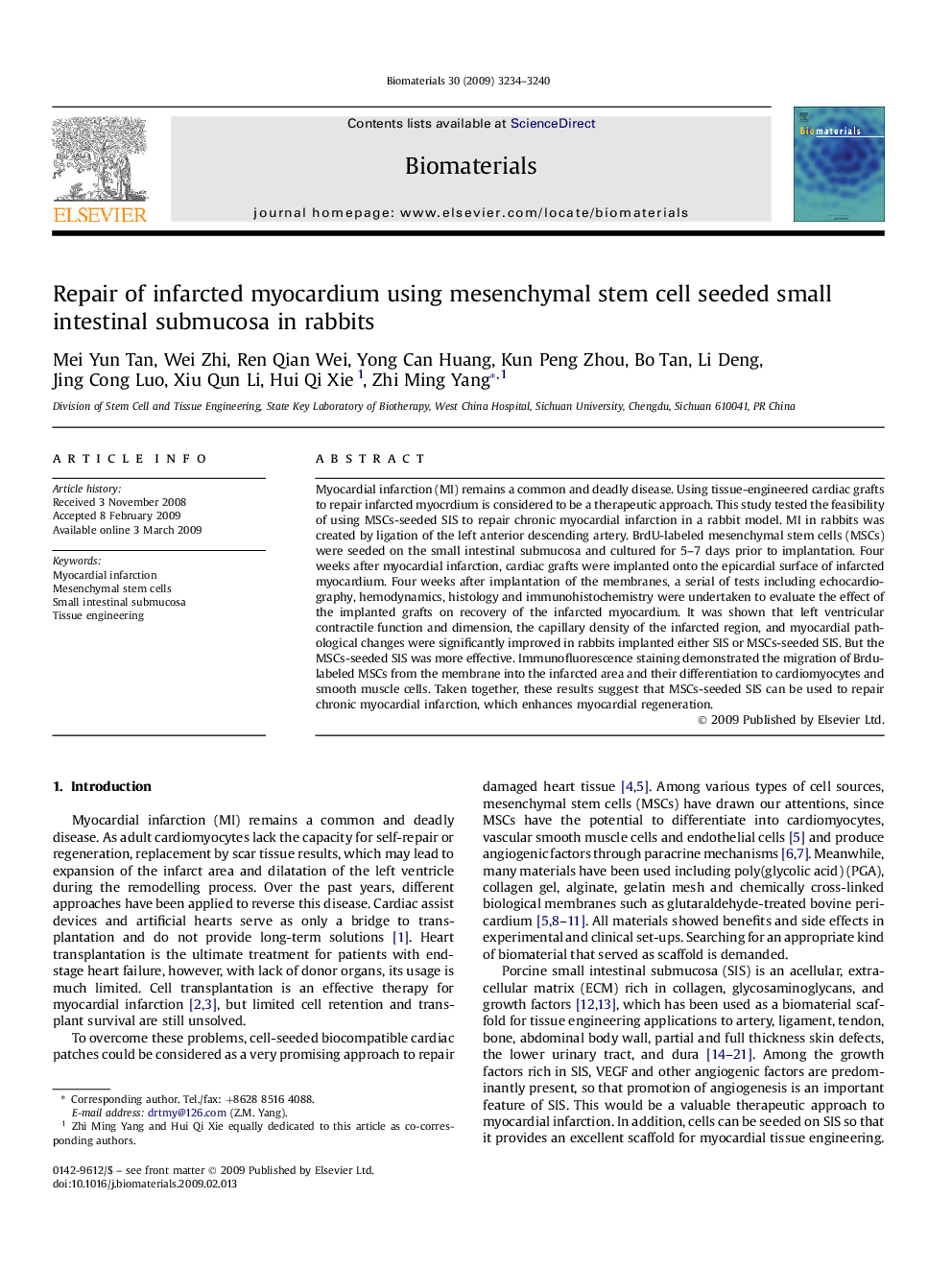| Article ID | Journal | Published Year | Pages | File Type |
|---|---|---|---|---|
| 10002 | Biomaterials | 2009 | 7 Pages |
Myocardial infarction (MI) remains a common and deadly disease. Using tissue-engineered cardiac grafts to repair infarcted myocrdium is considered to be a therapeutic approach. This study tested the feasibility of using MSCs-seeded SIS to repair chronic myocardial infarction in a rabbit model. MI in rabbits was created by ligation of the left anterior descending artery. BrdU-labeled mesenchymal stem cells (MSCs) were seeded on the small intestinal submucosa and cultured for 5–7 days prior to implantation. Four weeks after myocardial infarction, cardiac grafts were implanted onto the epicardial surface of infarcted myocardium. Four weeks after implantation of the membranes, a serial of tests including echocardiography, hemodynamics, histology and immunohistochemistry were undertaken to evaluate the effect of the implanted grafts on recovery of the infarcted myocardium. It was shown that left ventricular contractile function and dimension, the capillary density of the infarcted region, and myocardial pathological changes were significantly improved in rabbits implanted either SIS or MSCs-seeded SIS. But the MSCs-seeded SIS was more effective. Immunofluorescence staining demonstrated the migration of Brdu-labeled MSCs from the membrane into the infarcted area and their differentiation to cardiomyocytes and smooth muscle cells. Taken together, these results suggest that MSCs-seeded SIS can be used to repair chronic myocardial infarction, which enhances myocardial regeneration.
